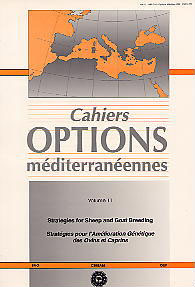| Article précédent | p. 121-131 | Article suivant |
Sheep husbandry in Poland - an outline
The breakdown in agricultural production following introduction of free market economy in Poland in 1989 resulted in dramatic decrease in sheep number from 4.991.000 in 1986 to 890.000 in June 1994, of which 81.6 per cent is kept on private farms. There are 26 sheep breeds kept in Poland, the most important are: Polish Merino (45 per cent), Polish Lowland Sheep (26 per cent), Polish Longwool Sheep (10 per cent) and Polish Mountain Sheep (10 per cent). In 1993, 25.8 per cent of all ewes were under recording scheme and performance recording was carried out in 230 flocks in public sector, with the average flock size of 331 ewes and in 2,129 flocks in private sector, with average size of 59. As the sheep production changed its direction from wool to meat, the major changes in breeding objectives were introduced in 1990 and the new goals were defined as early lamb growth and ewe prolificacy. The selection is based on two-trait index, including lamb body weight at 70 days and mean litter size of its dam and the ratio between economic values for both traits decides on the index pressure towards meat, litter size or dual purpose.
- [ Afficher ]
- [ Télécharger ]
- [ Exporter la citation ]
Vous pouvez télécharger la citation au format :
- [ Imprimer ]
-
Mots-clés
AMELIORATION DES ANIMAUX, ELEVAGE, OVIN, POLOGNE, PRODUCTION, SELECTIONCiter cet article
Martyniuk E., Rzepecki R. Sheep husbandry in Poland - an outline. In : Gabiña D. (ed.). Strategies for sheep and goat breeding . Zaragoza : CIHEAM, 1995. p. 121-131. (Cahiers Options Méditerranéennes; n. 11). Meeting of the joint FAO/CIHEAM Network on Sheep and Goats, Subnetwork on Animal Resources, 1995/03/26-28, Sidi-Thabet (Tunisia). http://om.ciheam.org/om/pdf/c11/96605549.pdf



